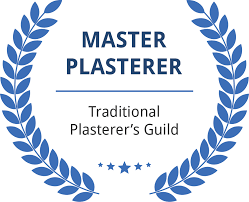A Guide to Traditional and Modern Lime Plastering Methods
- Owen
- Sep 24
- 4 min read
Lime plastering has been a trusted technique for centuries, valued for its durability, breathability, and natural aesthetic. Whether restoring historic buildings or applying a fresh finish to modern homes, lime plaster offers unique benefits that set it apart from cement-based alternatives. This guide explores both traditional and modern lime plastering methods, providing practical insights and tips to help you understand and apply this versatile material effectively.
Understanding Lime Plastering: Traditional and Modern Approaches
Lime plastering involves mixing lime with sand and water to create a workable paste that can be applied to walls and ceilings. Traditionally, lime plaster was made using natural hydraulic lime or non-hydraulic lime, which cures slowly by absorbing carbon dioxide from the air. This slow curing process allows the plaster to remain flexible and breathable, reducing the risk of cracking and moisture buildup.
Modern lime plastering often incorporates advanced formulations and additives to improve workability, setting time, and durability. These innovations make lime plaster more accessible for contemporary construction while maintaining its ecological and aesthetic advantages.
Traditional Lime Plastering
Traditional lime plastering relies on natural materials and time-tested techniques. The process typically involves three coats:
Scratch Coat - The first rough layer, applied to provide a key for subsequent coats.
Float Coat - A smoother layer that evens out the surface.
Finish Coat - The final thin layer, often polished or textured for aesthetic appeal.
Each coat is allowed to cure slowly, sometimes over several days or weeks, to ensure proper carbonation and strength development.
Modern Lime Plastering
Modern methods may use pre-mixed lime plasters or incorporate additives like pozzolans to accelerate curing. These plasters can be applied in fewer coats and dry faster, making them suitable for tight project schedules. Additionally, modern lime plasters often come with enhanced water resistance and improved adhesion properties.

Exploring Lime Plastering Techniques for Best Results
Applying lime plaster requires skill and attention to detail. Whether you choose traditional or modern methods, understanding the right techniques is crucial for a durable and attractive finish.
Surface Preparation: Clean and dampen the substrate to improve adhesion.
Mixing: Use the correct lime-to-sand ratio, typically 1:3 or 1:4, depending on the lime type.
Application: Apply plaster in thin, even coats using a trowel or hawk and trowel.
Curing: Keep the plaster moist during curing to prevent rapid drying and cracking.
For those interested in exploring more about lime plastering techniques, there are many resources and expert blogs available that provide detailed guidance and case studies.
Practical Tips
Use natural hydraulic lime for exterior applications due to its faster setting time.
Avoid applying lime plaster in freezing conditions or direct sunlight.
Protect finished surfaces from rain and wind during curing.

How Difficult is Lime Plastering?
Lime plastering can be challenging, especially for beginners. The material behaves differently from cement-based plasters, requiring patience and practice to master.
Workability: Lime plaster is softer and more pliable, which can make it tricky to apply evenly.
Curing Time: The slow carbonation process demands careful moisture control and longer drying periods.
Skill Level: Achieving a smooth finish or decorative texture takes experience and the right tools.
However, with proper training and practice, lime plastering becomes manageable. Many professionals recommend starting with small projects or practicing on sample boards before tackling large surfaces.
Overcoming Challenges
Use a consistent mixing method to maintain plaster quality.
Work in manageable sections to prevent drying before finishing.
Employ traditional tools like wooden floats and sponges for texture control.

Benefits of Using Lime Plaster in Modern Construction
Lime plaster offers several advantages that make it an excellent choice for both restoration and new builds:
Breathability: Allows moisture to escape, reducing damp and mould risks.
Flexibility: Accommodates slight building movements without cracking.
Eco-Friendly: Made from natural materials with low embodied energy.
Aesthetic Appeal: Provides a warm, natural finish that ages gracefully.
Durability: Resistant to weathering and salt damage, especially in coastal areas.
In modern construction, lime plaster can be combined with insulation and other sustainable materials to create healthy, energy-efficient buildings.
Applications
Restoration of historic buildings to preserve original fabric.
Interior wall finishes for natural humidity regulation.
Exterior renders in conservation areas or eco-friendly projects.
Tips for Maintaining Lime Plaster Surfaces
Proper maintenance extends the life and appearance of lime plaster. Here are some practical recommendations:
Regular Inspection: Check for cracks or damage, especially after extreme weather.
Gentle Cleaning: Use soft brushes and mild detergents to avoid surface damage.
Replastering: When necessary, use compatible lime-based materials for repairs.
Avoid Cement: Do not patch lime plaster with cement-based products, as this can cause incompatibility and damage.
By following these guidelines, lime plaster surfaces can remain beautiful and functional for decades.
Lime plastering combines tradition with innovation, offering a sustainable and attractive solution for many building projects. Whether you are restoring a historic home or applying a natural finish to a modern property, understanding the methods and techniques involved will help you achieve the best results. For more detailed advice and inspiration, exploring expert resources on lime plastering techniques is highly recommended.
For Help or advice on your next project, get in-touch with the experts at Lime Plastering Wales Telephone: 01873 877556 Email: info@limeplasteringwales.co.uk


